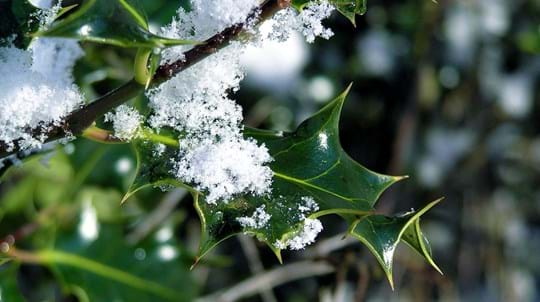
Blog
How to protect your plants in winter
Kate Lewthwaite • 04 Nov 2020

Content manager, botanist and tree lover
Winter pruning apple trees can be a daunting task. But follow these simple tips and easy steps to keep your apple trees looking good and producing a great crop of apples each season.
Apple trees can remain healthy and productive for 50 years or more, but they need proper care and correct pruning. Neglected apple trees lose vigour and stop producing fruit.
Has your apple (or pear) tree grown into a twiggy tangle? Is it too big to manage? Or has it stopped producing good apples? If the answer is yes, then this step by step advice is for you.
Suitable for: apples and pears.
Aims: to establish the basic structure of the tree making it easy to maintain. To remove dead, diseased or damaged wood to keep the tree healthy. To allow sunlight to reach the ripening fruits.
When: November to early March.
Difficulty: easy.
Tools: sharp secateurs, loppers (extendable if possible), folding pruning saw, ladder (consider a specialist tripod pruning ladder).
Start by pruning away branches that are diseased, damaged or dead.
If there are any sprouts coming from the base of the trunk, prune those out too. These are known as suckers and they originate from the rootstock rather than the fruiting tree grafted onto it.
Prune away any straight stems sprouting from main branches – these are water shoots and are often a sign of over-vigorous pruning over one season.
Aim for the open goblet-shaped canopy which opens up the crown to allow light in and air to move around freely. It boosts fruit production and reduces disease.
To create this shape, prune out upward growing interior branches, especially those that rub against each other or criss-cross other branches.
You can also remove leading branches that compete with each other or points where two or more branches grow from the same point and seem to compete with each other. Retain the healthiest branch that’s in the best position.
When you’re doing this, keep stopping, stand back and check your work and overall shape of the tree. Make sure you’re working towards evenly spaced branches and the open goblet shape.
As with the other cuts, all pruning cuts should be made flush to the branch.
Heading back means pruning the outside branches of the tree to shorten and thicken them, especially in young trees. It stops branches from getting long and gangly and at risk of snapping. Heading cuts are necessary when pruning young trees, but you’ll make fewer heading cuts as trees mature.
It generally involves cutting away 20-30% of last year’s growth. You can tell which growth is last year’s growth – look for the wrinkly ring of bark encircling each stem. This could be a few centimetres to over a metre back from the tip of the stem. But it depends on the vigour of the tree.
Unlike the previous steps, these cuts will be made part way along each branch. But where you make the cut is really important.
Make the cut just above an outward-facing bud. It will cause a new shoot to grow from the direction the bud is facing in the coming year. It will stimulate growth and encourage branches to grow in the direction you want.
Heading cuts should be avoided once the initial shaping of the tree has been completed as it can cause the tree to become overcrowded. In mature trees, if you need to use a heading cut to shorten a long and thin branch, make the cut in old wood as this causes less new growth.